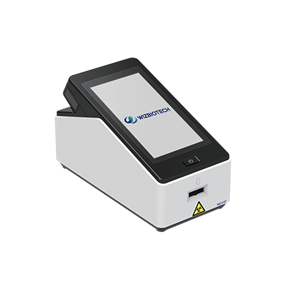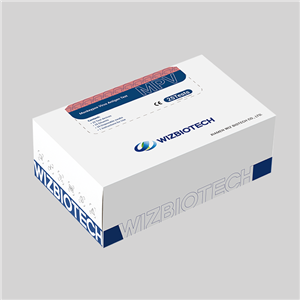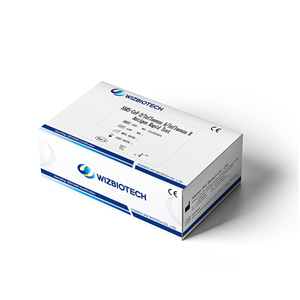China Acute Respiratory Infectious Diseases Report (week6, 2025)
Week 6 of 2025 (February 3, 2025 – February 9, 2025), and carried out the detection of 10 viruses, including COVID-19, influenza virus, respiratory syncytial virus, adenovirus, human metapneumovirus, parainfluenza virus, coronavirus, bocavirus, rhinovirus and enterovirus, as well as Mycoplasma pneumoniae, on samples collected from sentinel hospitals (excluding Hong Kong, Macao and Taiwan) nationwide.
The main pathogens of outpatient samples were mainly influenza virus, adenovirus, human metapneumovirus and rhinovirus. The main pathogens of inpatient samples were influenza virus, Mycoplasma pneumoniae, and respiratory syncytial virus, and the specific results are shown in Table 1, Figure 1 and Figure 2. There were regional differences between the north and the south and differences among different age groups in the test results, as shown in Tables 2 and 3.
Table 1 Positive rate of nucleic acid detection of respiratory tract samples in week 6 (%)
| Pathogens | Outpatients | Inpatients | ||
| Week 6 | Compared to last week* | Week 6 | Compared to last week* | |
| COVID-19 | 2.4 | +0.2 | 1.0 | -0.9 |
| FLU | 24.9 | +1.2 | 13.5 | -2.8 |
| RSV | 2.5 | -0.4 | 3.9 | -0.4 |
| ADV | 3.3 | -0.6 | 1.7 | -0.2 |
| HMPV | 3.2 | -1.1 | 3.6 | -0.3 |
| PFLU | 2.9 | +0.7 | 2.2 | +0.7 |
| Coronavirus | 2.2 | +0.2 | 1.7 | +0.4 |
| HBoV | 0.6 | -0.6 | 0.9 | +0.2 |
| HRV | 3.2 | +0.7 | 2.6 | -0.4 |
| EV | 1.2 | 0 | 0.7 | -0.5 |
| Mpn | 1.4 | 0 | 4.2 | -1.2 |
Table 2. Regional differences in the positive rate of nucleic acid detection of major pathogens in respiratory tract samples in week 6
| Province | Outpatients | Inpatients | ||||
| 1st | 2nd | 3rd | 1st | 2nd | 3rd | |
| South | FLU | HRV | PFLU | FLU | HMPV | RSV |
| North | FLU | HMPV | ADV | FLU | Mpn | RSV |
The southern provinces include: Shanghai, Jiangsu, Zhejiang, Anhui, Fujian, Jiangxi, Hubei, Hunan, Guangdong, Guangxi, Hainan, Chongqing, Sichuan, Guizhou and Yunnan.
The northern provinces include: Beijing, Tianjin, Hebei, Shanxi, Inner Mongolia, Liaoning, Jilin, Heilongjiang, Shandong, Henan, Tibet, Shaanxi, Gansu, Qinghai, Ningxia, Xinjiang and the Xinjiang Production and Construction Corps.
Table 3. Differences in the positive rate of nucleic acid detection of major pathogens in respiratory tract samples in week 2 by age group
| Age | Outpatients | Inpatients |
| 0~4 | FLU | FLU |
| PFLU | RSV | |
| HMPV | HMPV | |
| 5~14 | FLU | Mpn |
| ADV | FLU | |
| Mpn | RSV/ADV | |
| 15~59 | FLU | FLU |
| HRV | Mpn | |
| COVID-19 | HMPV | |
| ≥60 | FLU | FLU |
| HMPV | HRV | |
| COVID-19 | HMPV/coronavirus |
Figure 1-A: Weekly trend of positive rate of nucleic acid detection of respiratory tract samples of influenza-like cases in sentinel hospitals
Figure 1-B Weekly trend of positive rate of influenza virus testing in respiratory tract samples of influenza-like cases in sentinel hospitals (since 14 weeks in 2021).
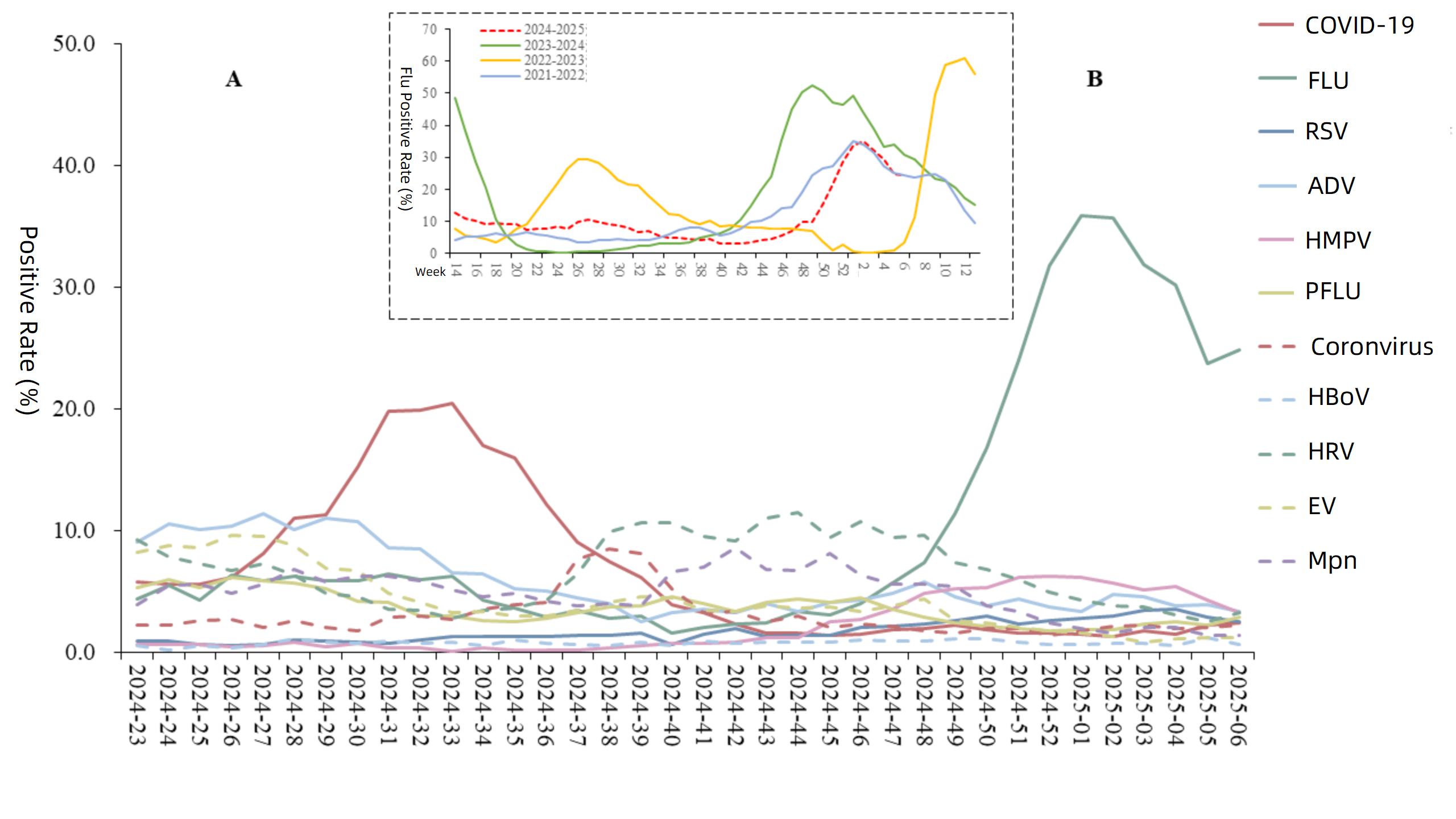
Fig. 2 Weekly trend of positive rate of nucleic acid detection of respiratory tract samples and pathogens in sentinel hospitals
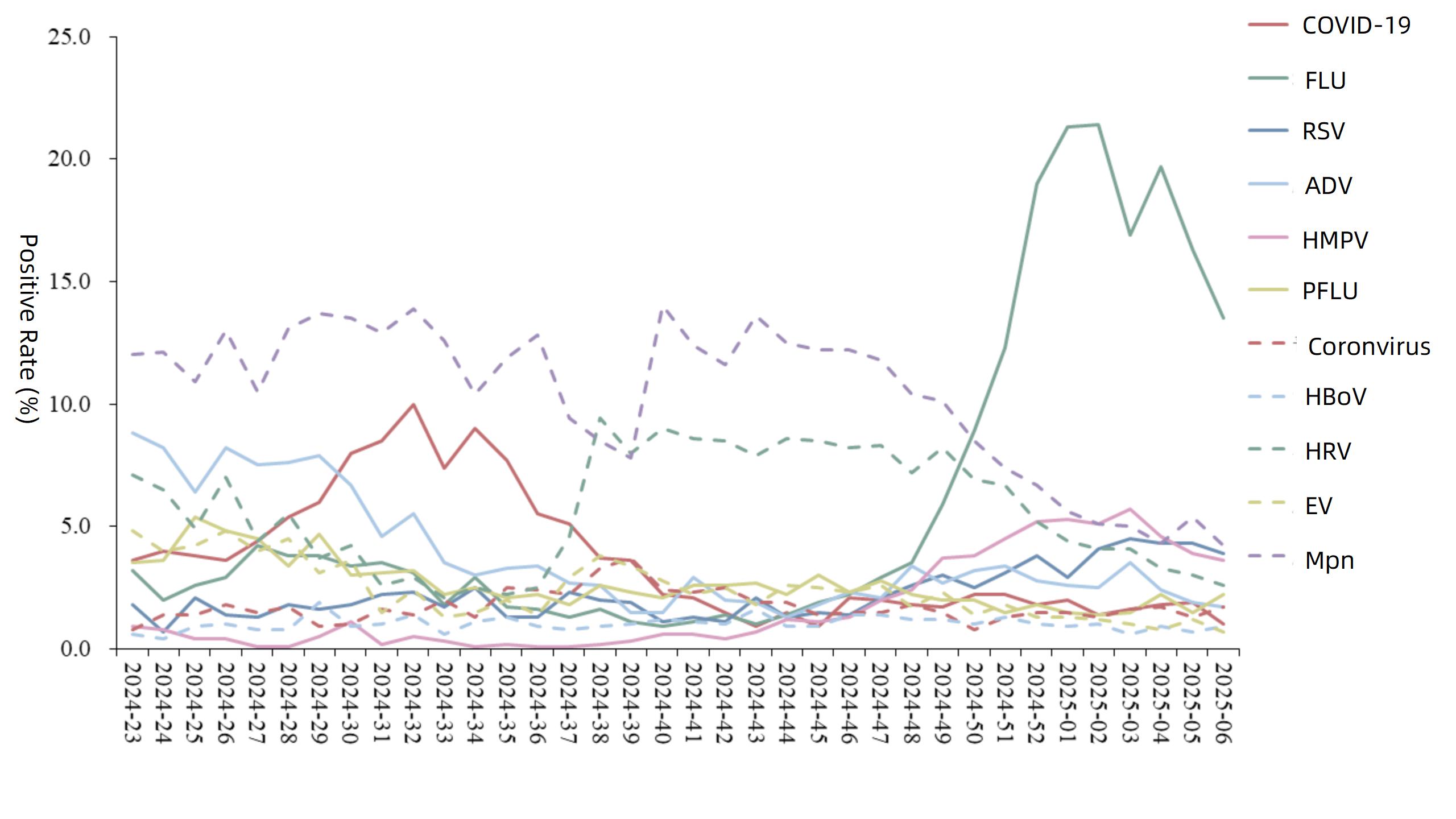
The result analysis shows that the incidence of acute respiratory infectious diseases continues to decline this week. All detected are known common pathogens, and no unknown pathogens or newly emerging infectious diseases caused by them have been found. Among them, influenza virus is the main pathogen causing acute respiratory infectious diseases recently, and it is still in the seasonal epidemic period, with an overall fluctuating downward trend in epidemic intensity. The positive rates of respiratory syncytial virus, human metapneumovirus, and Mycoplasma pneumoniae continue to decline. The positive rate of other respiratory pathogens such as adenovirus and novel coronavirus is at a low level.
Resource from CDC

